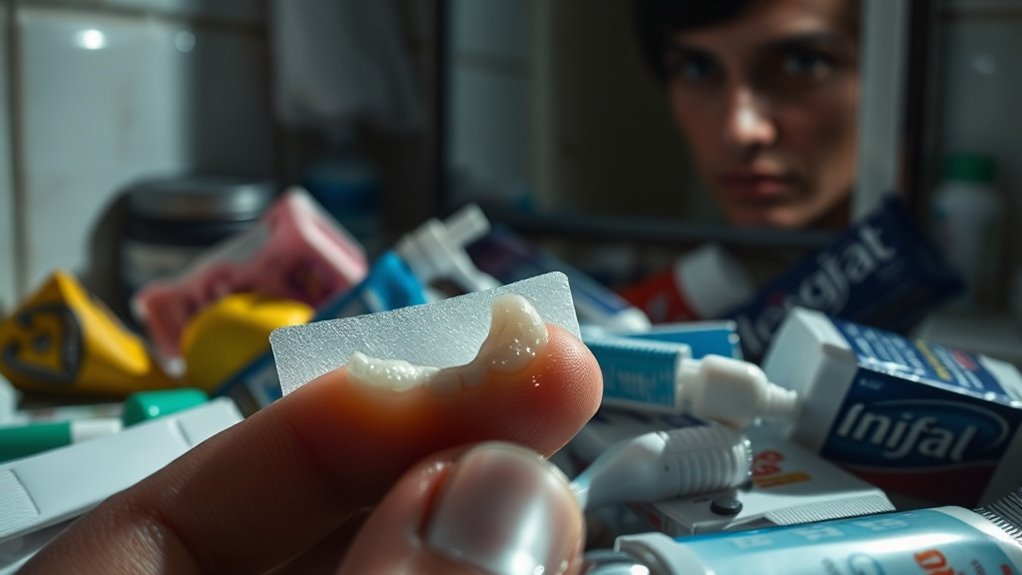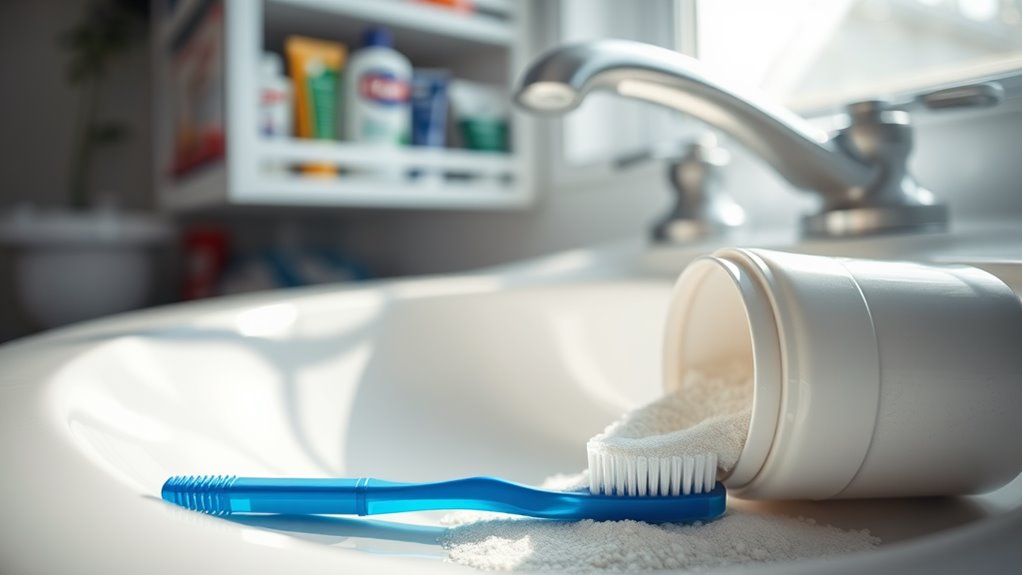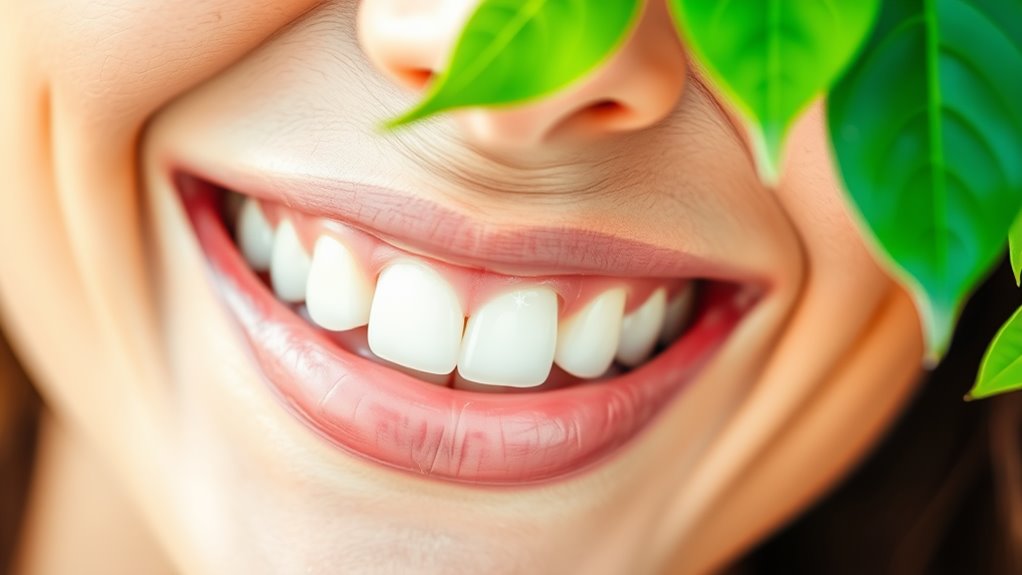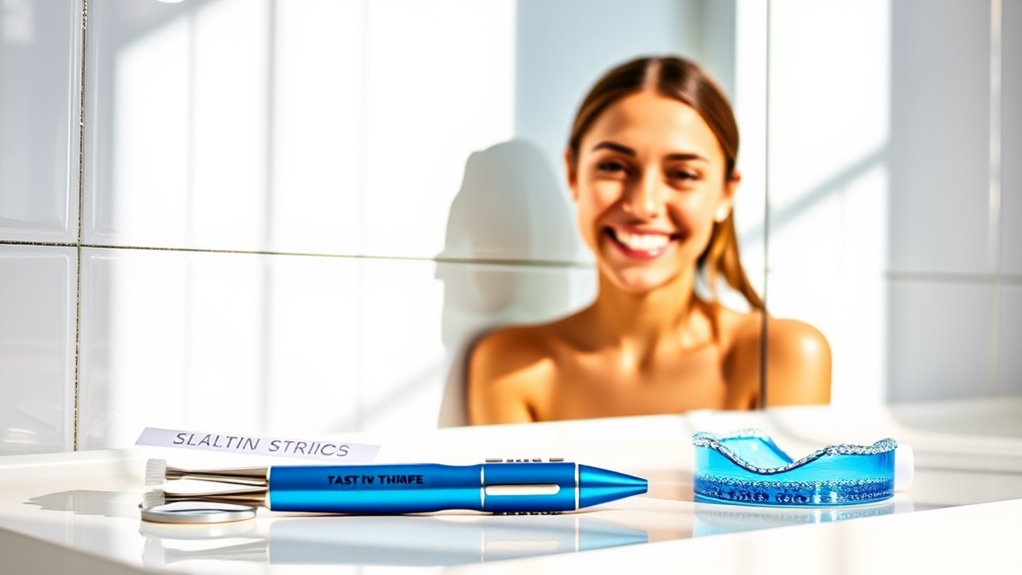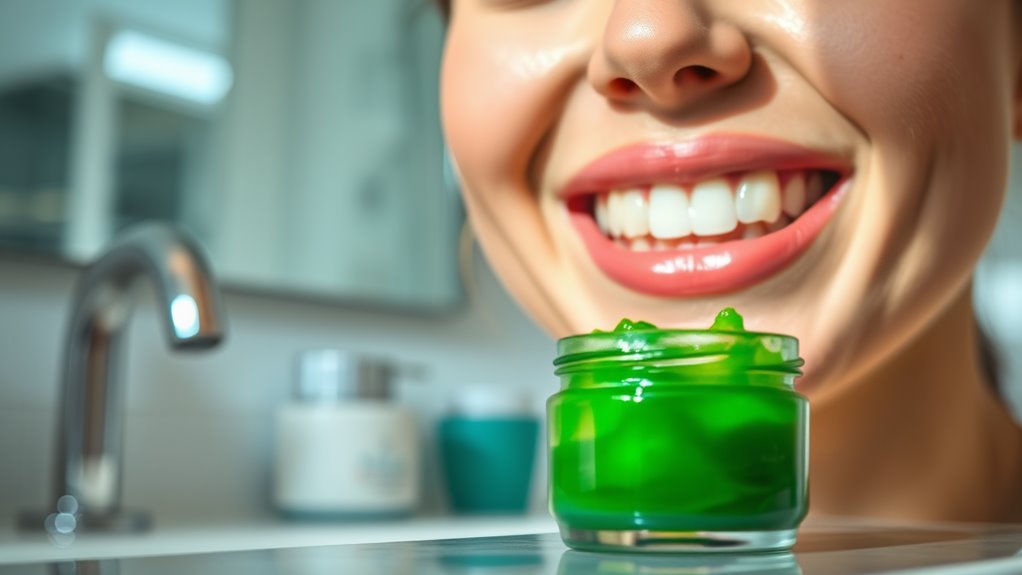Why Whitening Strips Might Not Work for Everyone
Imagine trying to fix a frayed fabric with a patch that just won’t adhere. That’s often how whitening strips work for some people—they just don’t stick or show results. Factors like tooth sensitivity, enamel condition, and the nature of your stains can all play critical roles in your whitening journey. If you’re curious about what might hold your bright smile back, there’s more to explore.
Individual Tooth Sensitivity
When considering whitening strips, it’s essential to recognize that individual tooth sensitivity can significantly influence your experience and results.
Whitening strips facts indicate that some users may experience discomfort during or after treatment. This sensitivity can stem from various factors, including gum health and existing dental issues. Additionally, individuals with heightened sensitivity might struggle with the impact of bacteria that causes discomfort during whitening processes.
It’s crucial to assess your tolerance and consult a dental professional before starting any whitening regimen.
Enamel Condition and Thickness
The condition and thickness of your enamel play a crucial role in the effectiveness of whitening strips. Thinner or compromised enamel may not respond well to these products.
Consider the following factors:
- Enamel erosion can hinder the whitening process.
- Sensitive areas may not tolerate the strips effectively.
- Underlying dental issues could also affect results.
- Keeping your enamel healthy can help promote overall oral health during any whitening regimen.
Evaluate your enamel’s health before starting any whitening regimen.
Extrinsic vs. Intrinsic Stains
Although both extrinsic and intrinsic stains can impact the whiteness of your teeth, they originate from different sources and require distinct approaches for treatment. Extrinsic stains occur on the surface due to food, drinks, or habits, while intrinsic stains arise from within, often linked to aging or medications. Understanding their differences can guide your whitening choices effectively. Professional treatments typically minimize side effects and provide long-lasting results that may benefit those with intrinsic stains.
| Type of Stain | Source | Treatment |
|---|---|---|
| Extrinsic | Food/Drinks | Whitening strips |
| Intrinsic | Aging/Medications | Professional bleaching |
Duration and Frequency of Use
How long should you use whitening strips to achieve the best results? Typically, you should use them for the duration indicated on the package, usually 10-14 days.
Consistency is key, but avoid overuse to prevent sensitivity.
- Follow the recommended application frequency.
- Allow the strips to sit for the specified time.
- Monitor your enamel’s response to the treatment. Additionally, adhering to the manufacturer instructions can help minimize risks associated with sensitivity and enamel damage.
Lifestyle Habits and Diet
To maintain and enhance the results from whitening strips, you need to consider your lifestyle habits and diet.
Consuming staining foods and beverages like coffee, red wine, and berries can hinder your progress. Additionally, smoking can seriously affect tooth color.
To achieve lasting whiteness, focus on a balanced diet, stay hydrated, and limit these damaging habits. Regular dental cleaning, along with good oral hygiene, helps combat staining and supports your whitening journey.
Make informed choices to support your whitening journey.
Alternative Whitening Methods
While whitening strips are a popular choice, there are several alternative whitening methods that you might consider for achieving a brighter smile.
-
Professional dental whitening treatments
-
At-home whitening gels or pens
-
Natural remedies like baking soda or activated charcoal
Exploring these options could help you find a solution better suited to your dental needs, ensuring a more effective whitening experience.
